Input interpretation

cyclooctadiene
Chemical names and formulas
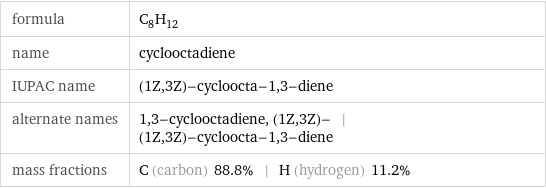
formula | C_8H_12 name | cyclooctadiene IUPAC name | (1Z, 3Z)-cycloocta-1, 3-diene alternate names | 1, 3-cyclooctadiene, (1Z, 3Z)- | (1Z, 3Z)-cycloocta-1, 3-diene mass fractions | C (carbon) 88.8% | H (hydrogen) 11.2%
Lewis structure
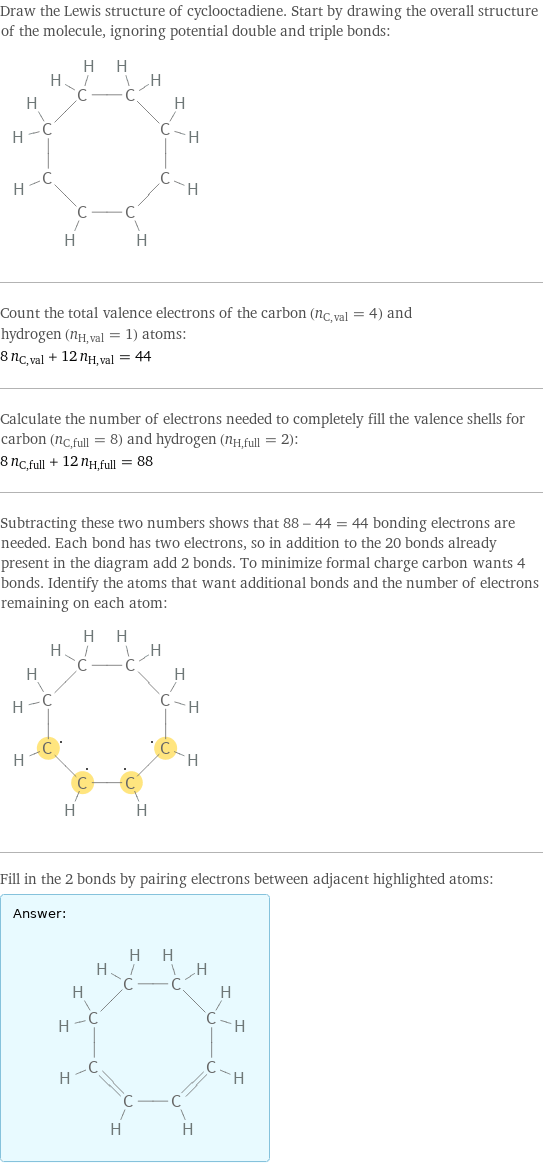
Draw the Lewis structure of cyclooctadiene. Start by drawing the overall structure of the molecule, ignoring potential double and triple bonds: Count the total valence electrons of the carbon (n_C, val = 4) and hydrogen (n_H, val = 1) atoms: 8 n_C, val + 12 n_H, val = 44 Calculate the number of electrons needed to completely fill the valence shells for carbon (n_C, full = 8) and hydrogen (n_H, full = 2): 8 n_C, full + 12 n_H, full = 88 Subtracting these two numbers shows that 88 - 44 = 44 bonding electrons are needed. Each bond has two electrons, so in addition to the 20 bonds already present in the diagram add 2 bonds. To minimize formal charge carbon wants 4 bonds. Identify the atoms that want additional bonds and the number of electrons remaining on each atom: Fill in the 2 bonds by pairing electrons between adjacent highlighted atoms: Answer: | |
3D structure

3D structure
Basic properties
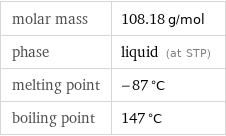
molar mass | 108.18 g/mol phase | liquid (at STP) melting point | -87 °C boiling point | 147 °C
Units

Thermodynamic properties

critical temperature | 647 K critical pressure | 3.78 MPa (at STP)
Chemical identifiers
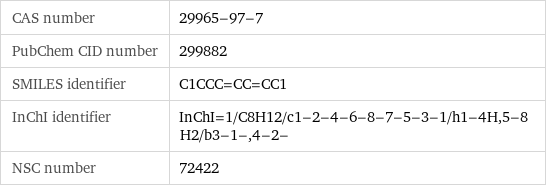
CAS number | 29965-97-7 PubChem CID number | 299882 SMILES identifier | C1CCC=CC=CC1 InChI identifier | InChI=1/C8H12/c1-2-4-6-8-7-5-3-1/h1-4H, 5-8H2/b3-1-, 4-2- NSC number | 72422
NFPA label

NFPA label
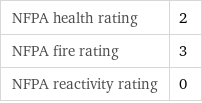
NFPA health rating | 2 NFPA fire rating | 3 NFPA reactivity rating | 0